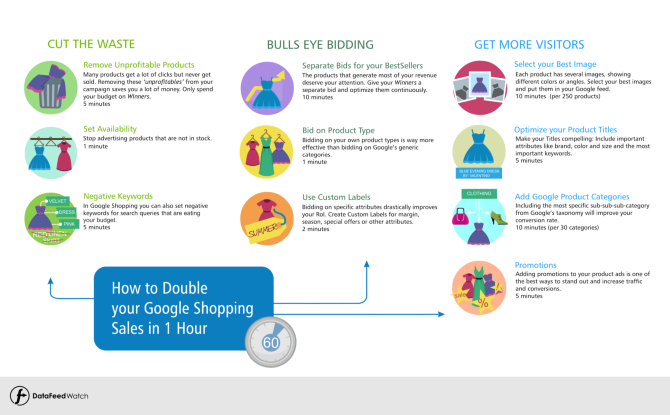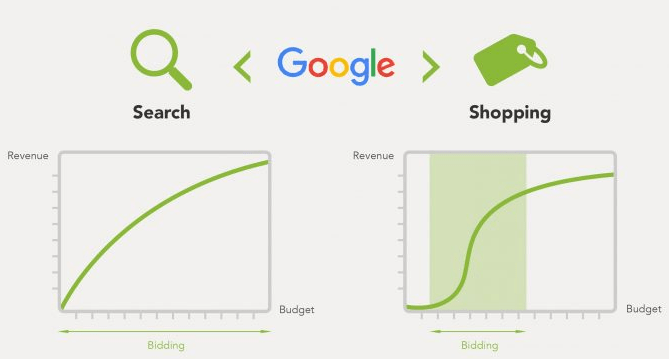Discover the secrets to maximizing your sales potential with Google Shopping Ads and watch your revenue soar to new heights!

Image courtesy of via DALL-E 3
Table of Contents
Introduction to Google Shopping Ads
Google Shopping Ads are a powerful tool for businesses looking to increase their sales through effective advertising campaigns. These special ads allow people to see a picture of a product, its price, and the store selling it right in their search results. By utilizing Google Shopping Ads, businesses can showcase their products to a wide audience of potential customers who are actively searching to make a purchase.
What are Google Shopping Ads?
Google Shopping Ads are a type of online advertisement where users can view an image of a product, its price, and the store selling it directly in Google search results. This visual format helps businesses catch the attention of potential customers and drive sales by providing key information upfront, making it easier for users to make purchasing decisions.
Why Use Google Shopping Ads?
Businesses can benefit greatly from using Google Shopping Ads because these ads target users who are already interested in purchasing products similar to what they offer. By displaying detailed product information in a visually appealing format, businesses can attract the attention of active shoppers and drive qualified traffic to their websites. This targeted advertising approach can result in higher conversion rates and increased sales for businesses of all sizes.
Setting Up Your Google Shopping Ads
When it comes to setting up your Google Shopping Ads, there are a few essential steps you need to follow to ensure your campaign is effective. By properly setting up your ads, you can showcase your products to a wide audience and boost your sales.
Creating a Google Merchant Center Account
Before you can start running your Google Shopping Ads, you’ll need to create a Google Merchant Center account. This account is where you’ll upload all the important details about your products, such as titles, prices, and images. Setting up this account is crucial in ensuring your products are displayed correctly to potential customers.
Uploading Your Product Data
After setting up your Google Merchant Center account, the next step is to upload your product data. This involves preparing all the necessary information about your products, such as their titles, descriptions, prices, and high-quality images. By providing accurate and detailed information about your products, you can attract more customers and increase the chances of making a sale.
Creating Your First Campaign
Now that you have set up your Google Merchant Center account and uploaded your product data, it’s time to create your first advertising campaign using Google Shopping Ads. This is an exciting step towards reaching more potential customers and boosting your sales.

Image courtesy of www.datafeedwatch.com via Google Images
Starting in Google Ads
To begin creating your campaign, you will need to navigate to Google Ads and sign in to your account. Once logged in, select “Campaigns” from the left-hand menu and click on the blue plus sign to create a new campaign. Choose the goal that aligns with your objectives, such as increasing website traffic or generating sales.
Setting Your Budget
Deciding how much money you want to spend on your ads is an essential step in creating your campaign. Consider your overall marketing budget and how much you are willing to allocate to Google Shopping Ads. You can choose between a daily budget, which determines how much you are willing to spend each day, or a campaign-level budget, which sets a maximum amount for the entire campaign duration.
Once you have set your budget, you can further optimize it by monitoring the performance of your ads and adjusting the spending based on the results. It’s important to track the effectiveness of your campaign to ensure you are getting the best return on your investment.
Choosing the Right Keywords
When you want to make sure your Google Shopping Ads reach the right people, choosing the right keywords is crucial. Keywords are like magic words that help your ads show up when someone searches for something similar to what you offer. Let’s dive into understanding and finding the best keywords for your products.
Understanding Keywords
Keywords are the words or phrases that people type into Google when they are looking for something. Imagine you’re selling colorful backpacks for school, and someone searches for “colorful school bags.” If you use “colorful school bags” as one of your keywords, your ad may show up when that person is searching, increasing the chances of them clicking on your ad and buying your product.
Finding the Best Keywords
So, how do you find the right keywords for your products? Start by thinking about what words someone might use to search for what you sell. Make a list of these words and phrases. You can also use tools like Google’s Keyword Planner to help you find popular keywords related to your products. Look for keywords that are specific to what you offer and have a good balance of being popular but not too competitive.
Creating Appealing Ad Content
When creating your Google Shopping Ads, your headline plays a crucial role in catching the attention of potential customers. Keep your headlines concise and informative, highlighting the key features of your product. Use words that entice curiosity and make people want to learn more about what you’re offering. Remember, the headline is the first thing a shopper sees, so make it count!
Image courtesy of support.google.com via Google Images
Using Great Images
Visual appeal is essential when it comes to Google Shopping Ads. Choose high-quality images that clearly display your product in the best light. Make sure the images are relevant, well-lit, and showcase your product from different angles. Customers are more likely to click on ads that have eye-catching visuals, so investing in professional product photography can pay off in increasing clicks and conversions.
Monitoring and Optimizing Your Campaign
After setting up your Google Shopping Ads, it’s important to keep track of how they are performing. This can be done through a tool called Google Analytics. Google Analytics helps you see which ads are doing well and which ones may need some adjustments. By monitoring the performance of your ads, you can make informed decisions on how to optimize them for better results.
Making Improvements
If you notice that some of your ads are not performing as well as you’d like, don’t worry! There are always ways to make improvements. You can try changing the keywords you are targeting, adjusting your budget, or even updating the images and headlines in your ads. By continuously evaluating and tweaking your campaigns, you can boost their effectiveness and drive more sales for your business.
Common Mistakes to Avoid
When setting up and running Google Shopping Ads, it’s essential to steer clear of some common mistakes that could hinder the effectiveness of your campaigns. By avoiding these pitfalls, you can ensure that your ads reach the right audience and drive maximum sales for your business.

Image courtesy of www.rankontechnologies.com via Google Images
Avoiding Over-Complicated Campaigns
One of the most frequent errors businesses make when starting with Google Shopping Ads is creating overly complex campaigns. While it might be tempting to include a wide range of products and settings from the beginning, this can lead to confusion and inefficiencies.
Instead, focus on simplicity. Begin by selecting a few key products to showcase and gradually expand your campaigns as you gain more experience. By starting small and optimizing along the way, you can better understand what works best for your business without overwhelming yourself with too many variables.
Not Ignoring Analytics
Another critical mistake to avoid is neglecting to monitor and analyze the performance of your Google Shopping Ads. Analytics provide valuable insights into how your campaigns are performing and where improvements can be made. By overlooking this data, you could be missing out on opportunities to optimize your ads for better results.
Make it a habit to regularly review your campaign metrics, such as click-through rates, conversion rates, and return on ad spend. By doing so, you can identify trends, capitalize on successful strategies, and make informed decisions to enhance the effectiveness of your Google Shopping Ads.
Success Stories
Now that we’ve learned about how Google Shopping Ads work and how to set up effective campaigns, let’s take a look at some real-life success stories to inspire you!
Small Business Triumphs
Imagine a small boutique selling handmade jewelry struggling to reach customers outside their local area. By setting up Google Shopping Ads, they were able to showcase their unique pieces to a wider audience online. As a result, their sales skyrocketed, and they gained customers from around the country who appreciated their craftsmanship.
Big Brands Winning with Google Ads
Even big brands like Nike have seen tremendous success with Google Shopping Ads. By leveraging the platform’s targeting capabilities, they were able to reach consumers actively searching for athletic wear and footwear. This targeted approach led to a significant increase in online sales and brand awareness, solidifying their position as a leader in the industry.
These success stories show just how impactful Google Shopping Ads can be for businesses of all sizes. Whether you’re a small boutique or a global brand, the right campaign strategy can help you boost your sales and reach a broader audience.
Conclusion
In conclusion, Google Shopping Ads are a powerful tool for businesses to showcase their products and increase sales. By utilizing these ads effectively, companies can reach potential customers actively searching for similar items. Let’s recap the key points we’ve covered in this article.

Image courtesy of www.wordstream.com via Google Images
What We’ve Learned
We began by introducing Google Shopping Ads as special ads that display product images, prices, and store information. The importance of using these ads to boost sales was highlighted, emphasizing their role in reaching interested buyers.
Next, we discussed the essential steps to set up Google Shopping Ads, focusing on creating a Google Merchant Center account and uploading product data accurately. This preparation is crucial for a successful advertising campaign.
Once the setup is complete, creating your first campaign involves starting in Google Ads and setting a budget that aligns with your marketing goals. Choosing the right keywords is key to ensure your ads are seen by the right audience searching for your products.
To make your ads stand out, we explored tips for writing catchy headlines and selecting great images that attract clicks. Monitoring and optimizing your campaign through tracking performance and making improvements is vital for ongoing success.
Lastly, we discussed common mistakes to avoid, such as over-complicating campaigns and neglecting analytics. Successful stories of businesses using Google Shopping Ads were also shared, offering inspiration for achieving similar results.
Steps to Success
As you embark on your journey with Google Shopping Ads, remember to keep your campaigns simple, track performance, and continuously optimize for better results. Small tweaks can lead to significant improvements in your advertising efforts, ultimately driving sales and business growth. Don’t hesitate to leverage the power of Google Ads to enhance your online presence and reach a broader audience.
Frequently Asked Questions (FAQs)
What are the costs involved?
Running Google Shopping Ads involves costs, as you will be paying for each click that your ads receive. The amount you spend will depend on your budget and how competitive your chosen keywords are. It’s important to set a budget that you are comfortable with and monitor your ad performance to ensure you are getting a good return on your investment.
How quickly will I see results?
The time it takes to see results from your Google Shopping Ads can vary. In some cases, you may start seeing an increase in traffic and sales shortly after launching your campaigns. However, it’s important to note that it can take time for your ads to reach the right audience and for them to take action. Be patient and monitor your ad performance to make any necessary adjustments.
Can I target specific customers?
Yes, you can target specific customers with Google Shopping Ads. By choosing the right keywords, setting up custom audiences, and utilizing advanced targeting options within Google Ads, you can ensure that your ads are shown to the right people. This helps increase the chances of converting those viewers into customers. It’s essential to understand your target audience and tailor your ads to meet their needs.







